Free download: Top 10 Natural & Easy Remedies for Joint Pain from Home. Learn these helpful remedies.
Estimated Reading Time: 12 minutes read
We don’t often think about sciatic nerve pain and knee pain together. Knee pain seems like it would be caused from a pulled muscle or the knee joint, right?
Not always.
There is the possibility that knee pain could actually be originating from the lumbar spine, due to compression on the sciatic nerve roots. As a result, this can cause knee pain secondary to radiculopathy.
Mind blown!
In order to understand this concept, it helps to understand more about the sciatic nerve itself.
Table of Contents
The Sciatic Nerve
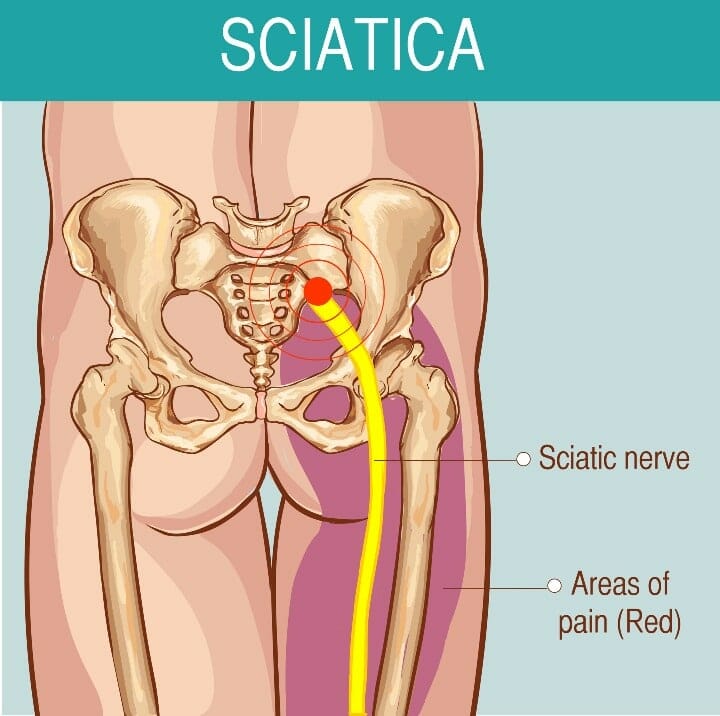
The sciatic nerve is the longest and largest nerve in the body.
It begins in the lumbosacral region, with nerve roots at the levels of L4-S3. The sciatic nerve runs from this area down the back through the gluteal region, continues down the back of the thigh, knee, calf and into the foot.
Once the sciatic nerve reaches the knee, it branches off into two main segments:
- Common peroneal nerve
- Tibial nerve
These nerves will also split into further branches.
Muscle Innervation
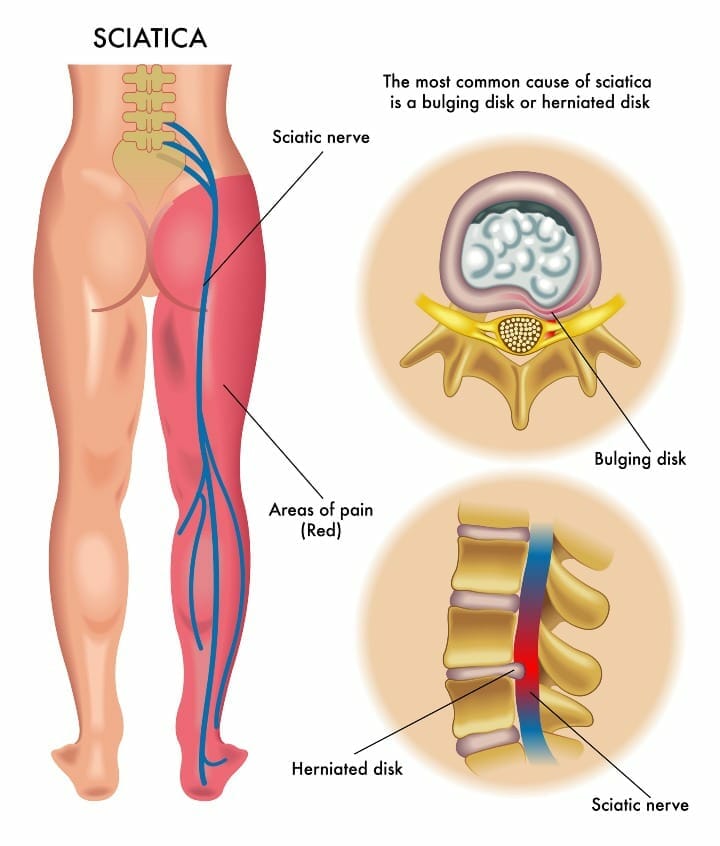
Due to the size of the sciatic nerve, it allows motor functions in multiple regions along the leg. Without innervation to these muscles, we would not be able to move our legs as needed to walk, run, take stairs, etc.
As the nerve runs down the back of the leg, it innervates the hamstring muscles and the hamstring region of your adductor magnus muscle.
The two primary branches of the sciatic nerve, the common peroneal and tibial nerves, continue from the knee to innervate several muscles located in the anterior (front), posterior (back) and lateral (outside) parts of the lower leg.
The common peroneal nerve also innervates muscles on the dorsum, or top, of the foot. The tibial nerve will help to control and innervate the deep, intrinsic muscles of the foot.
Sensory Innervation
Not only does the sciatic nerve innervate muscles, it also controls sensation down the back of the leg into the foot.
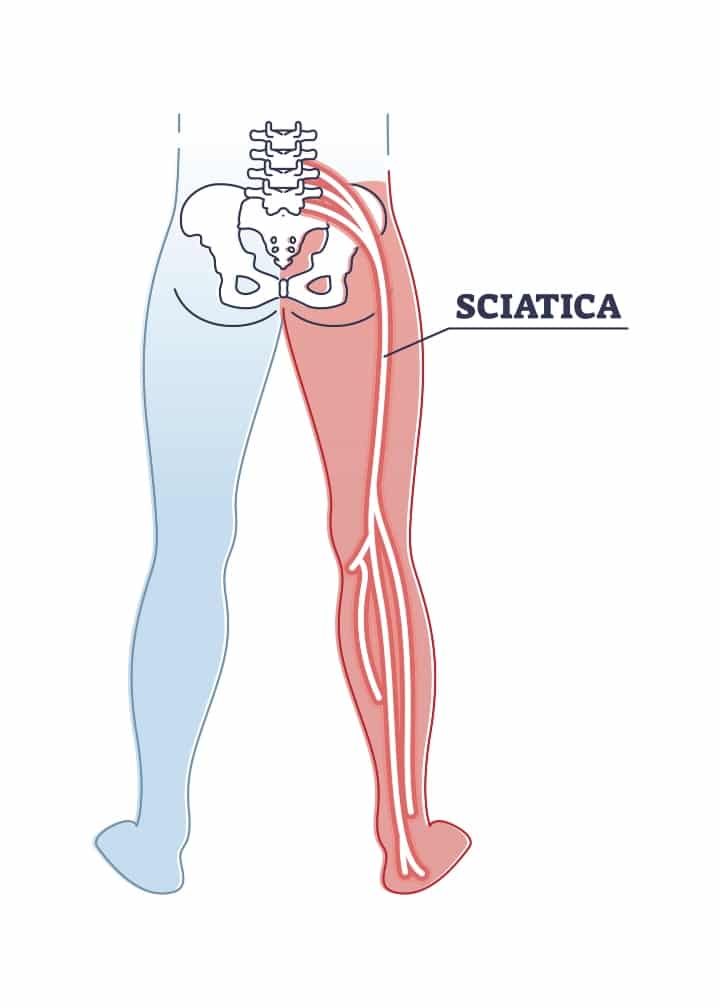
The areas where sensation is controlled by the sciatic nerve and its branches include the posterior thigh, posterior and lateral lower leg, dorsum and plantar surface of the foot.
Causes of Sciatica
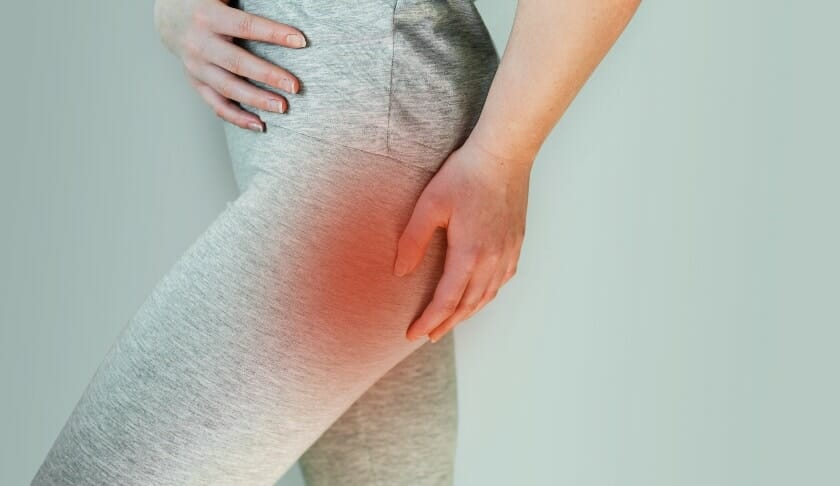
Sciatic pain is commonly caused and will usually occur as a result of a pinched nerve, inflammation, or some other type of nerve compression on or around the nerve.
The following conditions will typically lead to sciatica symptoms:
- Herniated disc
- Bone spur
- Spinal stenosis
- Degenerative disc disease
- Spondylolisthesis (slippage of the vertebrae from their normal position)
- Traumatic injury
- Obesity
- Any deviation from the normal curvature of the spine, such as with pregnancy or scoliosis
- Piriformis syndrome
- Tight hamstrings
- Poor posture
- Sedentary lifestyle
Knee Pain Caused By Sciatica

Now that we know more about the sciatic nerve and potential causes of sciatic nerve entrapment, how does sciatica cause knee pain?
Knee pain from sciatica can be related to nerve pain itself or can occur indirectly due to changes in gait and movement from the sciatica pain.
Sciatic Nerve Knee Pain Symptoms
If you’re experiencing knee pain because of sciatica, you will notice specific sciatic symptoms and sensations, including the following:
- Shooting pain or radiating pain
- Dull ache
- Burning sensation
- Knee weakness
- Increased pain on one leg versus both legs
- Numbness or tingling
- Warm sensation
Sciatica Knee Pain From Movement Abnormalities
Pain from the sciatic nerves can make it very hard to function properly.
If the muscles innervated by the sciatic nerve are disrupted in any way, this will largely impact the way we move.
You may notice one or more of the following largely due to subsequent weakness in the knee:
- Difficulty walking
- Difficulty climbing stairs
- Difficulty running
- Difficulty to bear weight on the affected leg
When you try to do any of the above activities, you’ll likely have a difficult time maintaining proper body mechanics. As a result, this can place abnormal stress and strain on the lower spine, back muscles, hips, knees, feet and ankles.
The knee joint may start to experience these abnormal pressures, which can contribute to or further worsen already present arthritic changes in the knees.
This type of knee pain may feel more like a sharp pain or could be a dull ache. The type of sensation may depend on what position you’re in or activity you’re doing.
There may also be associated swelling due to the stress on the knee joint from the sciatica.
You could very likely have other symptoms as well when the actual cause of it all is sciatica. This may include low back pain.
Treatment of Knee Pain from Sciatica

Once an accurate diagnosis of sciatica has been given by a healthcare professional through a thorough medical history intake and physical exam, the underlying cause of your sciatica can be determined. At that time, treatment recommendations will be given.
To treat sciatica, it’s important to determine if the pain you’re experiencing is acute sciatica or chronic sciatica, as the treatment approaches can very depending on the stage of pain onset.
General Treatment Strategies
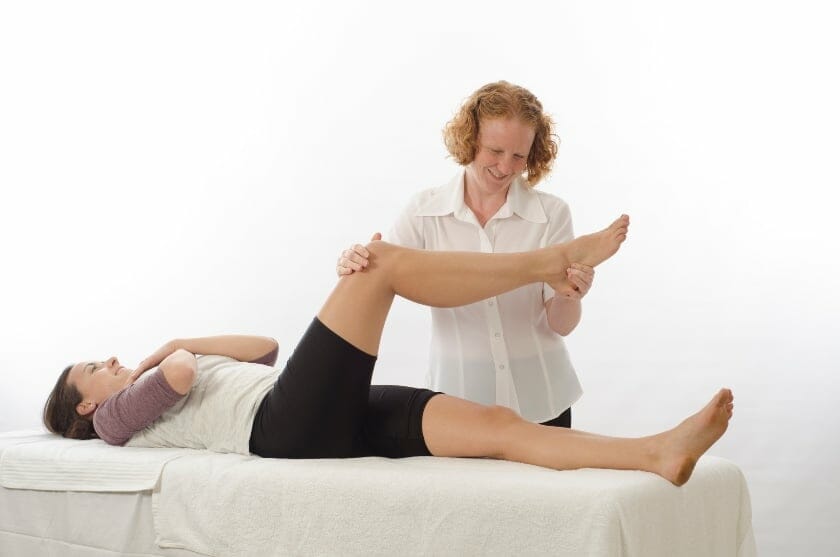
Some cases of sciatica can resolve on their own without any treatment, while others may require specific conservative measures to relieve pain.
Your doctor may refer you for physical therapy or chiropractic care to address your sciatica symptoms.
Treatment will very much depend on the physical assessment performed by these providers, but typically will involve the following:
- Exercise
- Massage or other form of manual therapy
- Lumbar traction
- Education on correct body mechanics, posture, and safe lifting techniques
- Home exercise program
Sciatica typically will usually resolve in a few weeks, typically 6-8.
If your symptoms have not resolved around this time, your doctor may have further imaging performed to further assess the spinal canal and spinal joints. This may include an X-ray, CT scan, or MRI.
Red Flags
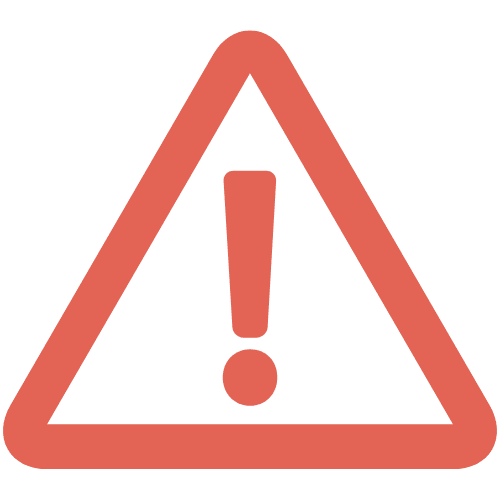
It’s important to know that if you’re experiencing sciatica pain and have the following red flag symptoms, you need to see your doctor, or in more severe cases contact emergency medical services immediately.
- Loss of bowel or bladder function
- Severe and sudden pain onset
- Sudden loss of feeling or strength in the leg
- Numbness or tingling in the inside of the thighs, or your saddle region
Sciatica Knee Pain Exercises
Exercise aimed at treating sciatica will focus on relieving the pain in the area directly experiencing it, but also more importantly at the site of origin. The site of origin of knee pain from sciatica is commonly the lumbosacral spine.
The following exercises are often used to treat knee pain related to sciatica.
Hamstring Stretch
Hamstring tightness at the back of the knee may be contributing to your pain.
You can perform the following hamstring stretch in a seated position or laying down.
Seated Hamstring Stretch
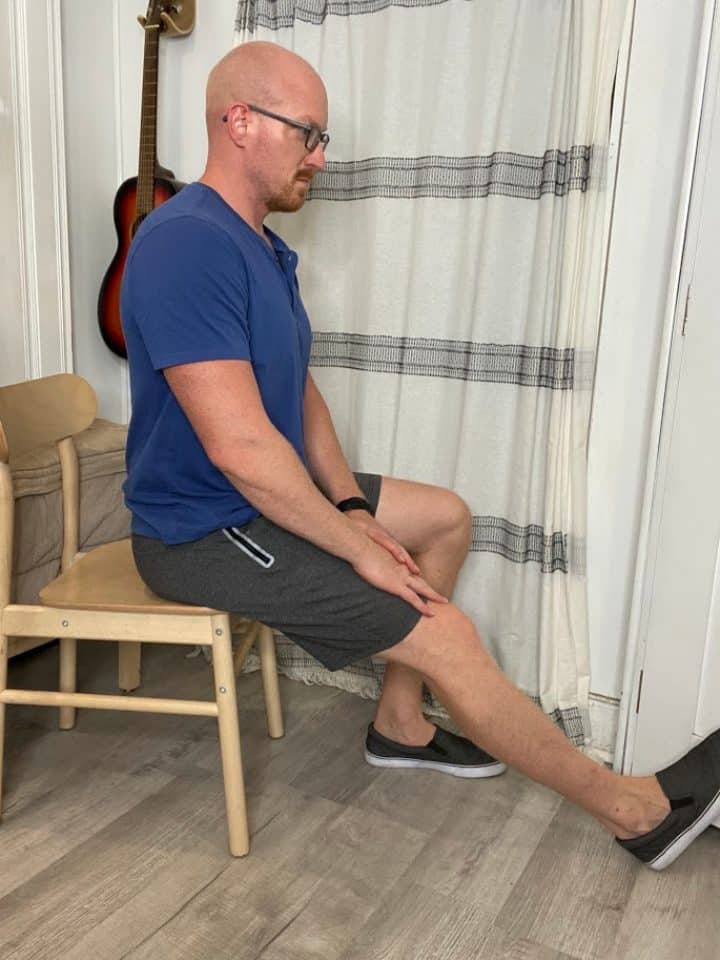
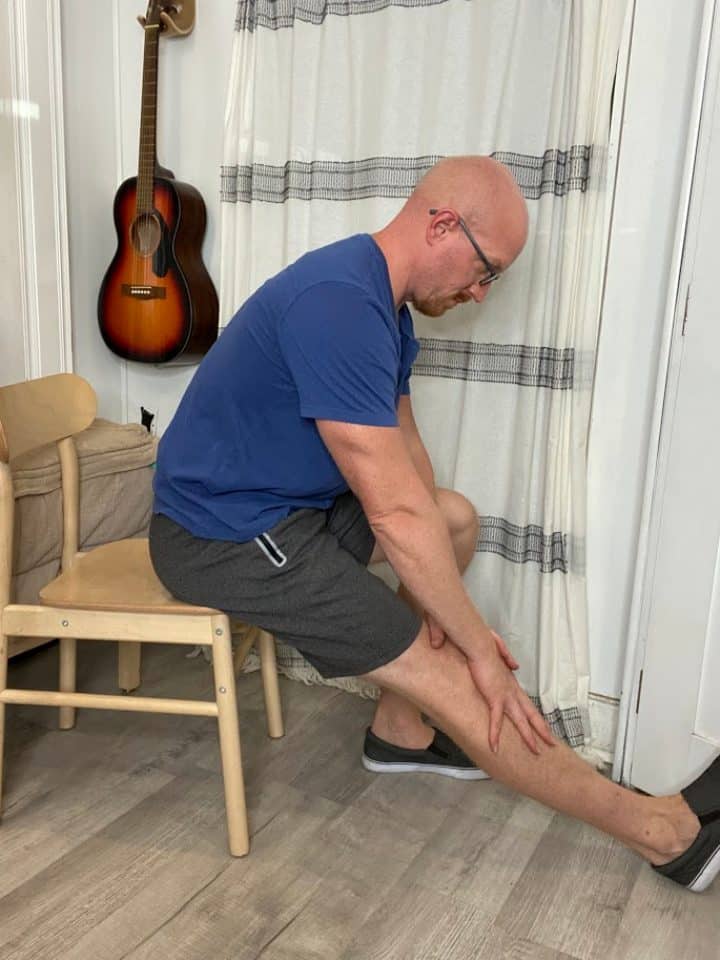
- Begin seated in a chair.
- Position the leg to be stretched straight in front of you.
- The heel should be in contact with the floor. The knee should remain straight.
- While keeping a straight back, slowly bend forward at the hips until a stretch is felt behind the back of the knee and/or thigh.
- Hold for at least 30 seconds or up to 1 minute.
Supine Hamstring Stretch
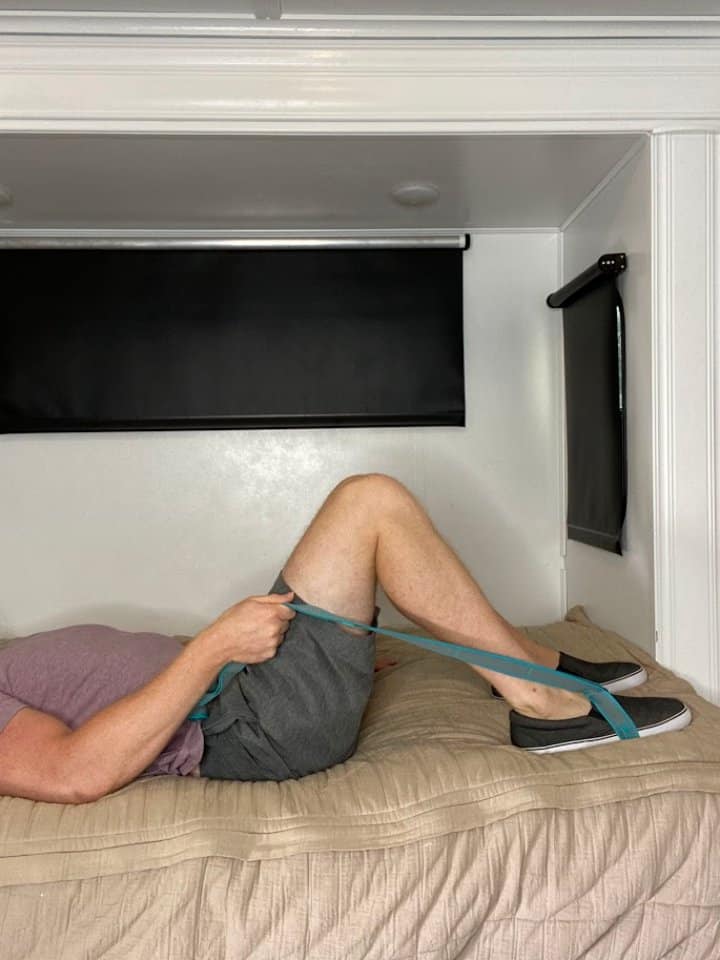
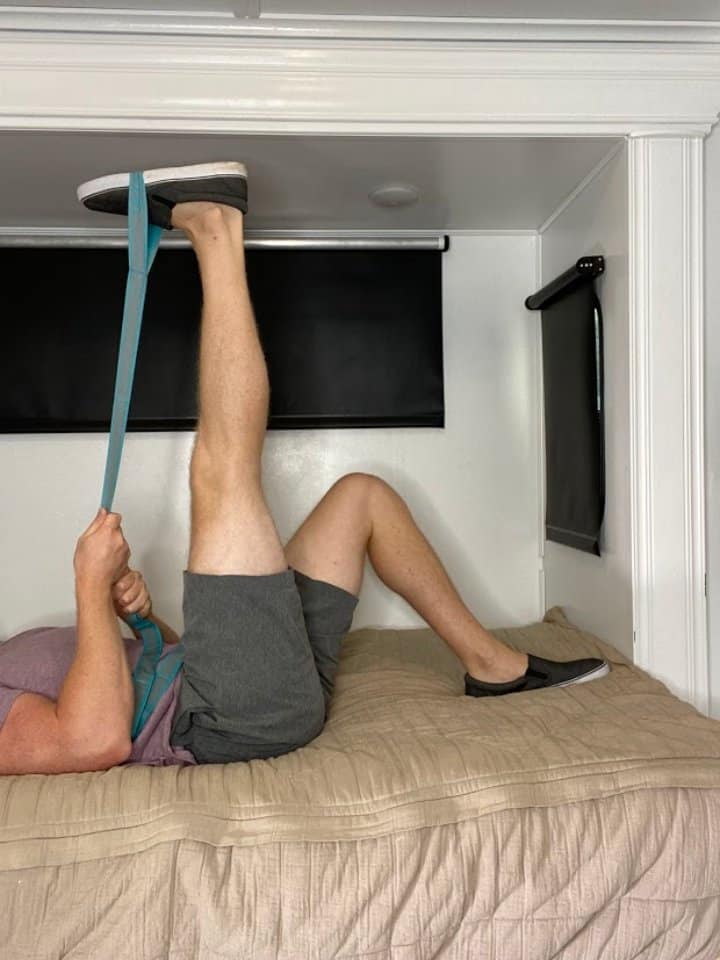
- This stretch will have you laying on your back (can be on the floor, bed or couch).
- Use a non-elastic strap (e.g., yoga strap, belt, or towel) to wrap around the foot on the leg that will be stretched.
- Bend the opposite knee, so that the foot is flat on the surface to support the back.
- Pulling on the strap with the arms, raise the leg up as high as you can go with a straight knee.
- You should feel a gentle pulling sensation in the back of the knee and/or thigh.
- Hold for at least 30 seconds or up to 1 minute.
Physical therapy will commonly include the use of nerve glides or nerve flossing to relieve pressure from sciatic nerve pain.
An easy way to perform this nerve glide is actually in the same positions as the above hamstring stretches.
Check out these videos that demonstrate how to turn your hamstring stretches into sciatic nerve glides.
Child’s Pose
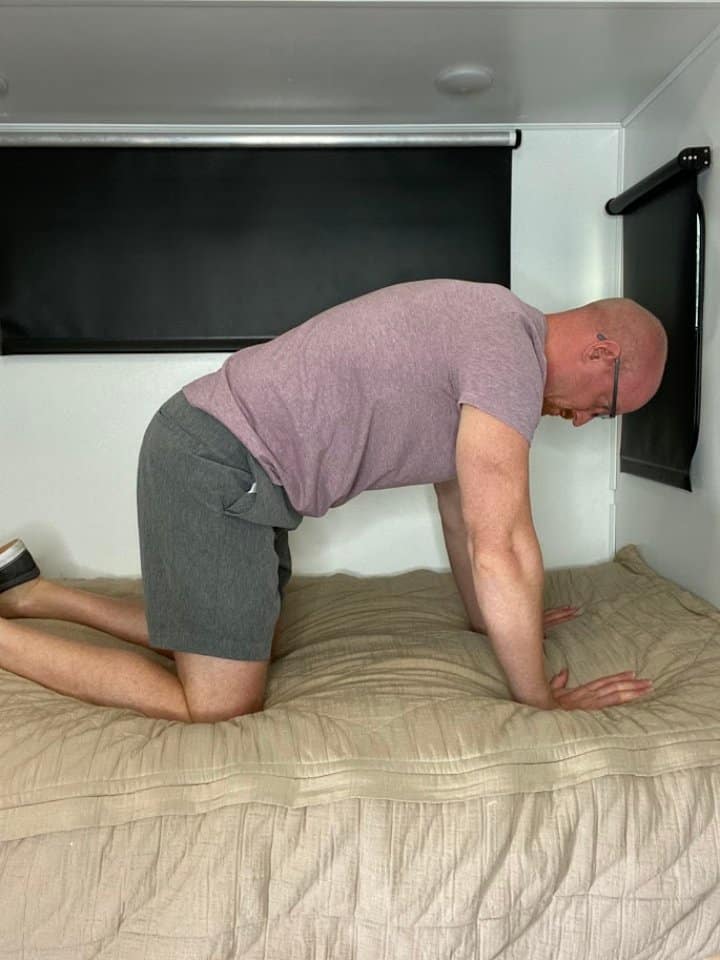
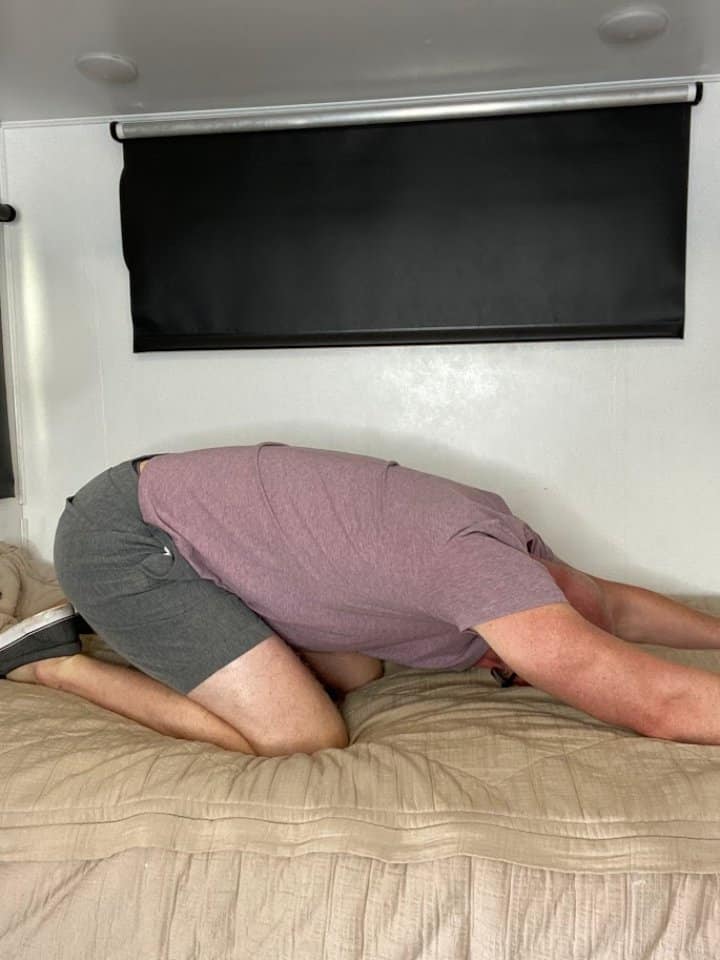
This is an excellent stretch to open the spinal canal in the lumbosacral region, where the nerve may be getting pinched.
- Position yourself on the hands and knees (can be on your floor, bed or couch).
- Sit the hips back towards the heels, while simultaneously stretching the arms forward.
- Allow the back to round.
- Make sure to relax the head in this position.
- Hold for at least 30 seconds or up to 1 minute.
Double Knee to Chest Stretch
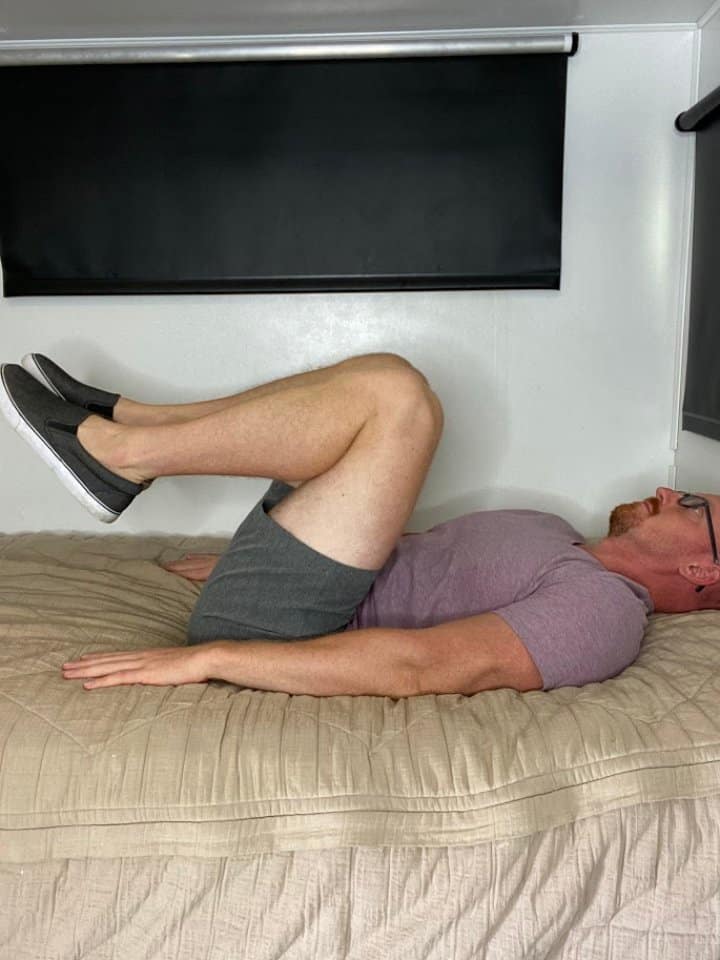
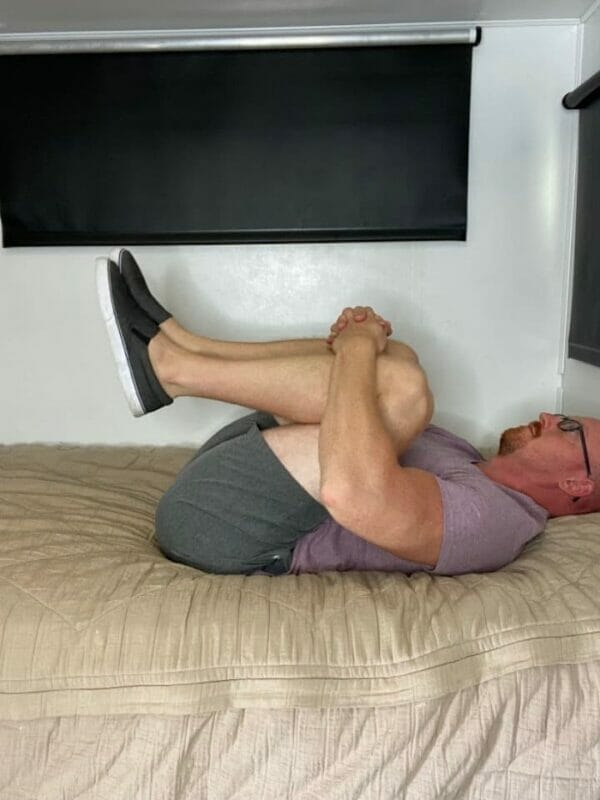
If you aren’t able to comfortably or safely perform child’s pose, a great alternative is the double knee to chest stretch.
- Position yourself on your back with the knees bent and feet flat on the surface (can be on your floor, bed or couch).
- Allow both knees, while remaining bent, to move towards the chest.
- Wrap your arms around the legs, gently pulling them into your chest (Tip: If it hurts the knees to wrap the arms on top of the lower legs, hold the back of the thighs instead).
- Hold for at least 30 seconds or up to 1 minute.
Traction for Treatment of Sciatica
While traction is commonly used, if appropriate, to treat sciatica under the care of a physical therapist or chiropractor, it can be hard to mimic this at home.
There are two options to try to re-create the effects of lumbosacral traction at home. One is with a swiss ball and the other only requires a pillow and sheet.
Self-Traction with a Stool
If you have a stool to use at home or even at your gym, then you’ll want to check out this video that demonstrates how to use this tool for a self-traction stretch.
- You’ll need to position yourself preferably on the floor.
- You should be on your knees, with the swiss ball in front of you.
- Lean your stomach into the ball while wrapping your arms around it like a big hug.
- Gently push yourself slightly forward and over the ball, maintaining contact with the floor via the balls of feet.
- You should feel like you’re hanging over the ball, which should give a nice, gentle traction-type stretch to the spine. There should be no pain with this.
- You can hold this stretch anywhere up to 1 minute, as tolerated.
Positional Distraction
If you don’t have a swiss ball available or aren’t comfortable with maneuvering to and from the floor, positional distraction may be a nice alternative for you.
- First you will need to make a bolster using a bed sheet and pillow.
- Take a bed sheet and fold it in half long-ways. Lay it along your bed for the next part.
- Now, take a pillow and position it vertically on one end of the sheet.
- Roll the pillow forward nice and tight. As you keep rolling, the sheet should be rolling with you. Continue to roll the pillow all the way to the other end of the sheet (this will look like a foam roller shape, but a lot softer).
This video will demonstrate how to set up and position yourself for positional distraction.
Positioning:
- Seat yourself next to your bolster on your bed (the bolster should be positioned directly next to you in a vertical position, pointing towards the edge of bed).
- If you’re having RIGHT leg symptoms, then the bolster should be next to your LEFT hip. If you’re having LEFT leg symptoms, then the bolster should be next to your RIGHT hip.
- Next, lay directly over the bolster on your side. To target the sciatic nerve, the bolster should be in contact with the lower part of the waist or the side of the hip.
- Next, bend the top leg, so that the knee moves into the chest. The top hip should be at about a 90 degree bend.
- Now slowly allow your upper body to rotate away from the edge of the bed, only to the level of the waist. If you have any pain with this twist, then you can forfeit this step.
Your goal is to lay in this position for up to 5 minutes at a time.
You should not have any pain. If you do, then this may be too advanced of a position for you to try.
If you’re able to hold the full 5 minutes, once the time is up, slowly return to an upright, seated position.
Conclusion
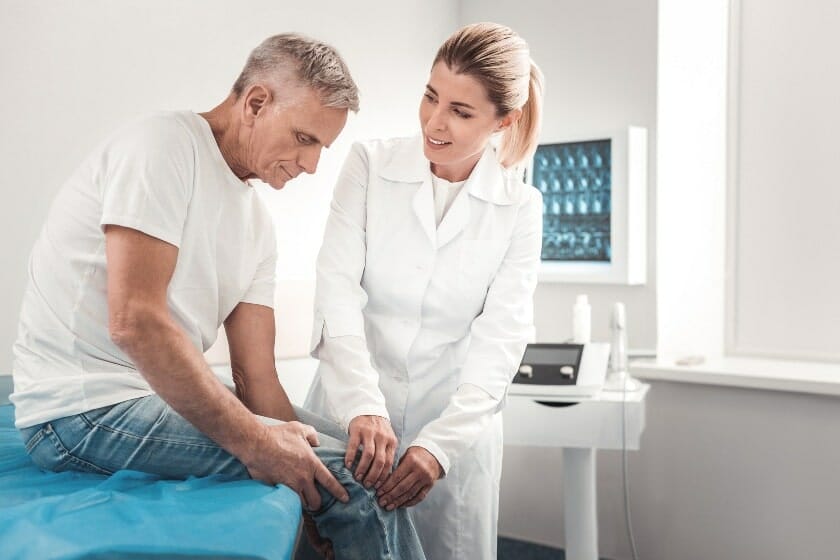
Although sciatica commonly originates from the back and can radiate down the whole leg, it can also create knee-specific pain.
It’s important to recognize the cause of your knee pain. If it truly is coming from the sciatic nerve, then it must be treated accordingly.
FAQ:
Will I need surgery if my sciatica doesn’t go away?
If you’re pain isn’t resolving with conservative measures and it’s interfering with your daily functioning, then surgery may be necessary.
You would need to consult with a neurosurgeon to confirm if surgery is necessary.
If I have one episode of sciatica, but it goes away, will it come back?
There’s a chance you can have a recurrence of sciatica if you’ve had it previously, but there’s also a possibility it may never return.
You can reduce your chances of it coming back by continuing with your home exercises to maintain your progress.
Is it good to walk with sciatica?
You may want to avoid long walks while you’re recovering, but as long as shorter walks don’t flare up your pain, then walking is fine to keep you as active as possible.


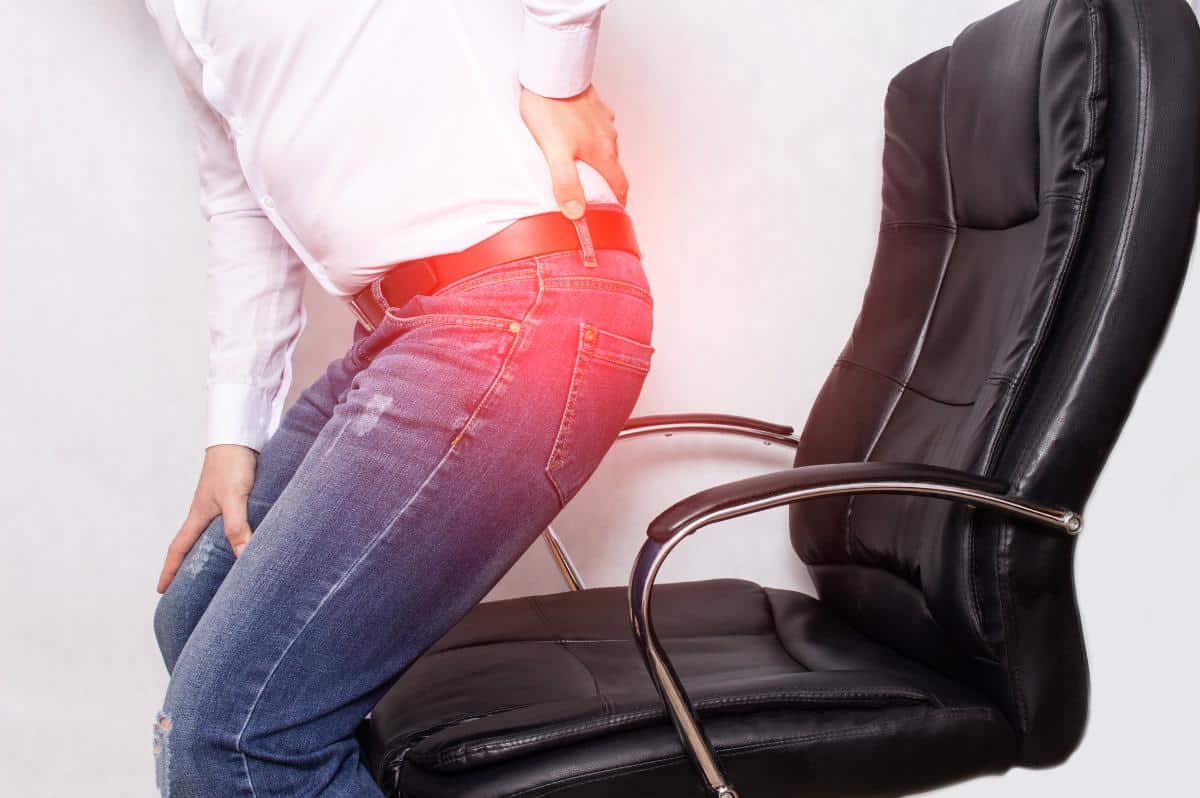








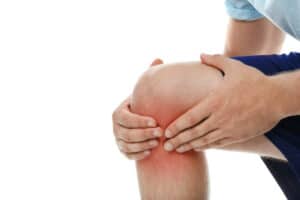
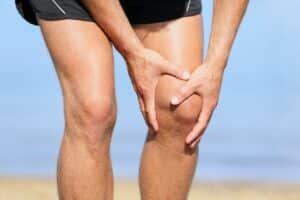
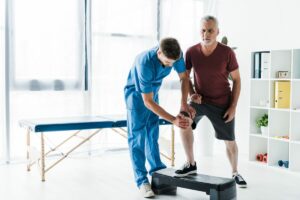

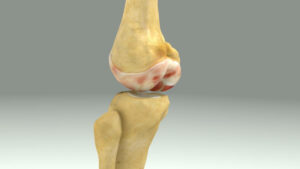

One Response
Very interesting read. Factual sound and well-explored. Thank you.